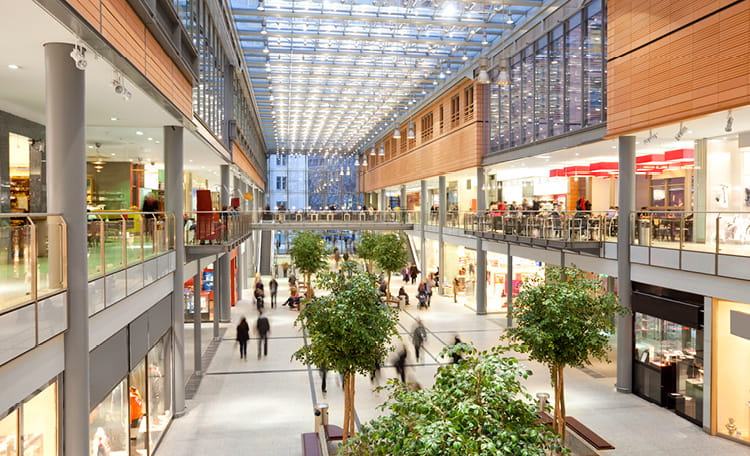
COVID-19 has illustrated that we can accomplish a lot from the comfort of our own homes. We can work, supervise our remote-learning children, socialize via video conferencing calls and even buy groceries online. Now, as vaccines are being administered, will consumers continue to shop online, return to stores or will there be a balance in between?
 One of the few positive byproducts of COVID-19 has been the acceleration of technology to enable us to be more productive from virtually anywhere, affording us some new options. For instance, now that we know what we can do from home, the future of the office looks different. Most companies are considering a hybrid model post-COVID-19, with employees splitting their week between remote and office. Similar to the office, the grocery store of the future looks different as well. Although people know they can shop online from the comfort and safety of their own homes, they want options. One day, they may want to have their groceries delivered, but the next they may want to go in person. Or they might want to visit in person to select their own produce, but then pick up the products they bought online on their way out. Thanks to digital disruption, the grocery store of the future is heading towards a hybrid model, providing limitless options to its customers.
One of the few positive byproducts of COVID-19 has been the acceleration of technology to enable us to be more productive from virtually anywhere, affording us some new options. For instance, now that we know what we can do from home, the future of the office looks different. Most companies are considering a hybrid model post-COVID-19, with employees splitting their week between remote and office. Similar to the office, the grocery store of the future looks different as well. Although people know they can shop online from the comfort and safety of their own homes, they want options. One day, they may want to have their groceries delivered, but the next they may want to go in person. Or they might want to visit in person to select their own produce, but then pick up the products they bought online on their way out. Thanks to digital disruption, the grocery store of the future is heading towards a hybrid model, providing limitless options to its customers.
CUSTOMERS WANT TO GO TO STORES STILL – JUST DIFFERENTLY
According to more than 2,100 consumers surveyed in retail and food service experts WD Partners’ recent study, buy online, pick up in-store (BOPIS) approval is at an all-time high and is here to stay post-vaccine; grocery delivery is so high in the minds of the public that its approval rating is near 100 percent; and dark stores (no shopping, pick-up and delivery only) are being well received. But even though consumers can forego in-person shopping through these offerings, 72 percent of consumers still consider excellent in-store experience extremely important. Offering an in-store experience is important to create brand engagement, highlight unique features and benefits, and grow the transactional value of the consumer. A talented baker, knowledgeable butcher or having an incredible choice of fresh fish will drive footsteps to a store. Today, it is about finding the right balance for the consumer and understanding how they want to engage with their favorite grocery store, and then blending the right technology to optimize the experience. Taking this information into consideration, WD Partners developed the “Grocery Store of the Future” model (see example rendering on following page), which is not only a store, but is BOPIS, delivery and experience all tied together by technology and operations.
This model could work as a standalone, and it could also work well within a mall. In fact, 62 percent of consumers surveyed by WD Partners last year stated they wanted to see more grocery stores replace vacant department stores in malls. The experiential nature of this new store format would perfectly complement the mall environment—order groceries, hit the mall to shop and then pick up your order on the way out. Auchan in Luxembourg and Eroski in Spain are two examples of grocery stores that have opened locations inside malls.
According to Coresight Research, nearly 50 percent of shoppers are buying more groceries online due to COVID-19—this still leaves 50 percent of shoppers who are reliant on in-store only. Assets will be vital in serving customers in a familiar but evolved way, but they will need to offer something more interesting to the customer to justify the trip to a store. Those grocers who optimize their supermarkets into part store with engaging social elements and part fulfillment center, are providing both the retail and logistics value, all the while providing more options to its consumers—which is what they really want.
BIG THINGS IN GROCERY TECH
- Micro-fulfillment centers (MFCs) allow for small fulfillment centers to exist in heavily populated areas, including inside grocery store stock rooms. These automated systems make it possible to pick and pack a grocery order for delivery or pick-up in a few minutes.
- Automated online supermarkets are another recent innovation. British company Ocado is an online-only supermarket that utilizes cutting-edge automation and robotics that can assemble an order of 50 items in a matter of minutes.
- Third-party final mile fulfillment such as Instacart in the U.S., Deliveroo in the UK and FlipKart in India have become heavily relied upon by grocery stores and customers. Utilizing a third-party logistics provider pushes the costly final mile component to another party with scale, dropping density network effects for the grocery stores themselves.
- Intelligent inventory management, such as Walmart’s Intelligent Retail Lab (IRL) in New York, is a futuristic shopping environment designed to explore the possibilities of automated intelligence (AI) through sensors, cameras and processors. The technologies being utilized at the IRL store may eventually become mainstream for grocery stores.



